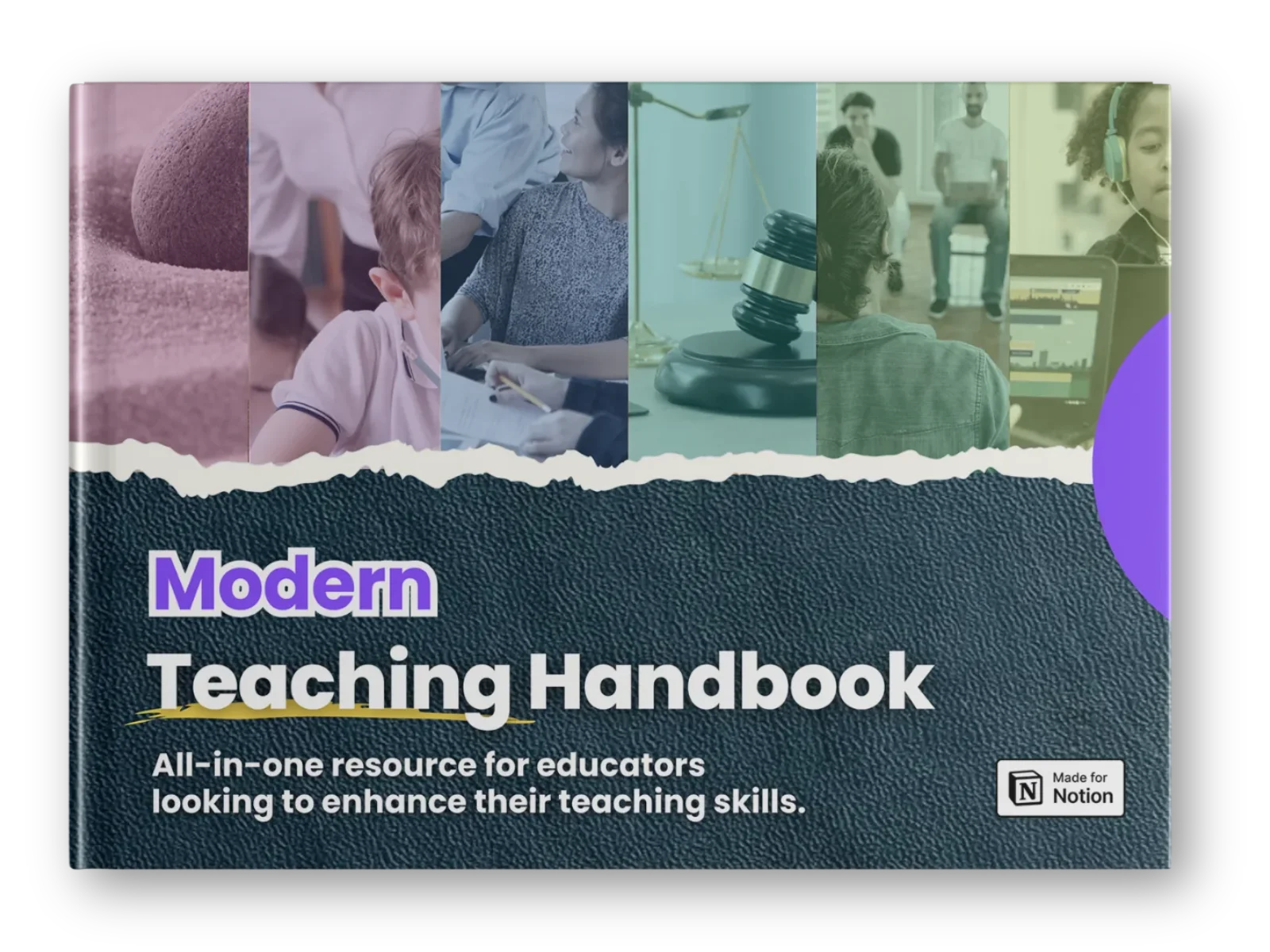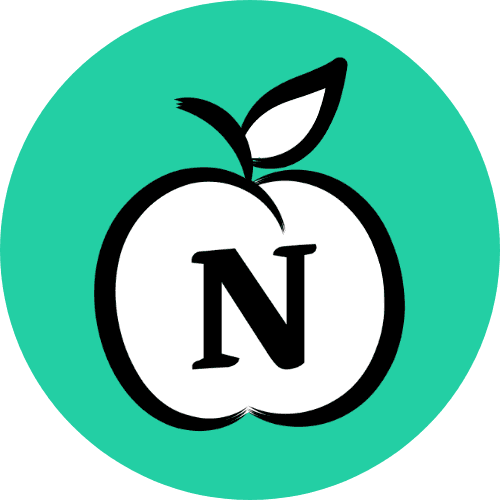Modern Teaching Handbook
Master modern education with the all-in-one resource for educators. Get your free copy now!



Building Strong Relationships with Parents as an Educator
Building Strong Relationships with Parents as an Educator
Building Strong Relationships with Parents as an Educator

Article by
Milo
ESL Content Coordinator & Educator
ESL Content Coordinator & Educator
All Posts
Modern Teaching Handbook
Master modern education with the all-in-one resource for educators. Get your free copy now!

Modern Teaching Handbook
Master modern education with the all-in-one resource for educators. Get your free copy now!

Modern Teaching Handbook
Master modern education with the all-in-one resource for educators. Get your free copy now!

A strong partnership between educators and the learners' parents is important to student success. Parents play a huge role in education. When they feel connected and supported by the educators, children thrive more. Building these relationships takes consistent communication, mutual respect, and a strategic approach. But with just a bit of work, educators can create long-term meaningful connections that benefit everyone, including the students, parents, and themselves. In this blog, we will go through some actionable strategies designed to help educators develop respectful and collaborative relationships with their learners' parents.

Creating Open Lines of Communication
Communication is at the center of any strong relationship, including between parents and teachers. To create trust between them, keep the lines of communication open, clear, and consistent by using multiple channels like emails, newsletters, phone calls and parent-teacher meetings to reach out. Start early with an introductory message or meeting at the start of each school year that shares your teaching philosophy, goals for the class and preferred communication methods while encouraging parents to share their input too. Showing your value, transparency and welcomeness will go a long way toward assuring parents their child is safe.
Technology to Your Advantage
Make use of apps or platforms specifically created for educators so you can efficiently share updates, assignments and announcements with parents without them feeling overwhelmed by too much information at once. This makes staying informed easier.
Show Empathy and Understanding
Parents often juggle multiple responsibilities simultaneously, making each family situation unique. A little empathy goes a long way toward building trust and understanding between educators and families. Listen actively when parents express concerns and take time to fully comprehend their perspectives before acting on them in interactions, whether that involves academic challenges, social development, or behavioral concerns. By making parents feel seen and respected during interactions, they're more likely to back your efforts in class.
Positive Framing
When approaching any difficulties with students, rather than solely hammering on the problems, emphasize their strengths first and present any challenges as opportunities for growth. This approach shows fairness while simultaneously creating solutions-oriented discussions.
Celebrate Milestones Together
Every child's accomplishments deserve to be acknowledged, and including parents in these celebrations strengthens parent-teacher bonds. From academic success, personal growth, or extracurricular achievements. Make an effort to celebrate these milestones together with parents by hosting events like classroom showcases, award ceremonies, or informal “student spotlight” days. Or even a written note or email noting the student's progress can also suffice as a means for acknowledgment.
Why It Matters
Celebrating success reminds parents that their efforts and those of their child are acknowledged and appreciated, strengthening a collective pride while also strengthening the commitment to education.
Create a Welcoming Environment
Parents are most likely to engage when they feel welcome and valued as active contributors in their child's education. Build an inclusive atmosphere in which their participation is encouraged. You can arrange opportunities such as volunteering in classrooms, joining parent committees, or contributing your talents to special projects. Make it clear that their presence is more than helpful. It is also very important in developing an engaged school community.
Small Gestures, Big Impact
Even simple acts, such as greeting parents warmly and being available during school events or remembering their names, can have a tremendous impact on how welcome parents feel in your school community. These small details create lasting impressions.
Be Transparent About Expectations
Miscommunication can often happen when expectations are unclear, which hinders any collaboration. To create an environment of trust between parents and educators, be open about goals, policies, and classroom procedures, including homework deadlines or discipline measures as part of your classroom structure. Use clear language when outlining expectations to them. Address any challenges head-on before they lead to misinterpretations. For example, if homework deadlines or discipline measures form part of your classroom structure, then explain their significance as well as any rationale behind their inclusion. This will make sure there is a collaborative relationship with them.
Consistency is Important
Parents need reassurance that you are committed to providing structure and fairness. Knowing what they can expect helps align efforts around a student more closely, providing an important support network for the students.
Creating At-Home Activities
Helping parents design meaningful at-home activities for their children can significantly enhance their children's educational experience. Engaging tasks tailored to meet each child's educational level can complement the schoolwork effectively. For example, activities for phonemic awareness, such as rhyming games, sound matching, or breaking words into syllables, can significantly strengthen early literacy skills. Encourage parents to use everyday items like flashcards, storybooks, or even recipes as learning opportunities in routine moments. Collaborative tasks, like solving puzzles or practicing math through grocery budgeting, keep children entertained while reinforcing classroom concepts. Remind parents that the goal should not be to recreate schoolwork; it should create a supportive learning environment at home, with children having fun. Balancing creativity and consistency can help children feel motivated about their academic abilities. Giving families simple, adaptable ideas can allow them to create personalized learning experiences for their own children.
Value Cultural Differences
Acknowledging and respecting the cultural backgrounds of your learners' families is very important in order to form inclusivity. Making efforts to learn about and incorporate their traditions, values, and perspectives into classroom settings demonstrates inclusivity. Find opportunities to connect with parents about their cultural experiences, whether through multicultural events, student projects, or personal dialogue. Taking an approach towards diversity that forms mutual appreciation will build bridges that bring us all closer.
Inclusion Strengthens Connection
When parents see their culture acknowledged within an educational environment, they're likely to feel more at home and secure in this “partnership”.

Conclusion
Building strong relationships between teachers and parents is not simply an optional component of education; it's important. A harmonious parent-teacher partnership creates a supportive network for students that reinforces their growth and success. By prioritizing communication, empathy, and inclusion among parents and teachers, educators can earn parents' trust and respect. It will all go towards the benefit of the learners in the long term. Parents and educators share a mutual goal: they both want the children to thrive. So when everyone works collaboratively, they create success far beyond the classroom walls.
A strong partnership between educators and the learners' parents is important to student success. Parents play a huge role in education. When they feel connected and supported by the educators, children thrive more. Building these relationships takes consistent communication, mutual respect, and a strategic approach. But with just a bit of work, educators can create long-term meaningful connections that benefit everyone, including the students, parents, and themselves. In this blog, we will go through some actionable strategies designed to help educators develop respectful and collaborative relationships with their learners' parents.

Creating Open Lines of Communication
Communication is at the center of any strong relationship, including between parents and teachers. To create trust between them, keep the lines of communication open, clear, and consistent by using multiple channels like emails, newsletters, phone calls and parent-teacher meetings to reach out. Start early with an introductory message or meeting at the start of each school year that shares your teaching philosophy, goals for the class and preferred communication methods while encouraging parents to share their input too. Showing your value, transparency and welcomeness will go a long way toward assuring parents their child is safe.
Technology to Your Advantage
Make use of apps or platforms specifically created for educators so you can efficiently share updates, assignments and announcements with parents without them feeling overwhelmed by too much information at once. This makes staying informed easier.
Show Empathy and Understanding
Parents often juggle multiple responsibilities simultaneously, making each family situation unique. A little empathy goes a long way toward building trust and understanding between educators and families. Listen actively when parents express concerns and take time to fully comprehend their perspectives before acting on them in interactions, whether that involves academic challenges, social development, or behavioral concerns. By making parents feel seen and respected during interactions, they're more likely to back your efforts in class.
Positive Framing
When approaching any difficulties with students, rather than solely hammering on the problems, emphasize their strengths first and present any challenges as opportunities for growth. This approach shows fairness while simultaneously creating solutions-oriented discussions.
Celebrate Milestones Together
Every child's accomplishments deserve to be acknowledged, and including parents in these celebrations strengthens parent-teacher bonds. From academic success, personal growth, or extracurricular achievements. Make an effort to celebrate these milestones together with parents by hosting events like classroom showcases, award ceremonies, or informal “student spotlight” days. Or even a written note or email noting the student's progress can also suffice as a means for acknowledgment.
Why It Matters
Celebrating success reminds parents that their efforts and those of their child are acknowledged and appreciated, strengthening a collective pride while also strengthening the commitment to education.
Create a Welcoming Environment
Parents are most likely to engage when they feel welcome and valued as active contributors in their child's education. Build an inclusive atmosphere in which their participation is encouraged. You can arrange opportunities such as volunteering in classrooms, joining parent committees, or contributing your talents to special projects. Make it clear that their presence is more than helpful. It is also very important in developing an engaged school community.
Small Gestures, Big Impact
Even simple acts, such as greeting parents warmly and being available during school events or remembering their names, can have a tremendous impact on how welcome parents feel in your school community. These small details create lasting impressions.
Be Transparent About Expectations
Miscommunication can often happen when expectations are unclear, which hinders any collaboration. To create an environment of trust between parents and educators, be open about goals, policies, and classroom procedures, including homework deadlines or discipline measures as part of your classroom structure. Use clear language when outlining expectations to them. Address any challenges head-on before they lead to misinterpretations. For example, if homework deadlines or discipline measures form part of your classroom structure, then explain their significance as well as any rationale behind their inclusion. This will make sure there is a collaborative relationship with them.
Consistency is Important
Parents need reassurance that you are committed to providing structure and fairness. Knowing what they can expect helps align efforts around a student more closely, providing an important support network for the students.
Creating At-Home Activities
Helping parents design meaningful at-home activities for their children can significantly enhance their children's educational experience. Engaging tasks tailored to meet each child's educational level can complement the schoolwork effectively. For example, activities for phonemic awareness, such as rhyming games, sound matching, or breaking words into syllables, can significantly strengthen early literacy skills. Encourage parents to use everyday items like flashcards, storybooks, or even recipes as learning opportunities in routine moments. Collaborative tasks, like solving puzzles or practicing math through grocery budgeting, keep children entertained while reinforcing classroom concepts. Remind parents that the goal should not be to recreate schoolwork; it should create a supportive learning environment at home, with children having fun. Balancing creativity and consistency can help children feel motivated about their academic abilities. Giving families simple, adaptable ideas can allow them to create personalized learning experiences for their own children.
Value Cultural Differences
Acknowledging and respecting the cultural backgrounds of your learners' families is very important in order to form inclusivity. Making efforts to learn about and incorporate their traditions, values, and perspectives into classroom settings demonstrates inclusivity. Find opportunities to connect with parents about their cultural experiences, whether through multicultural events, student projects, or personal dialogue. Taking an approach towards diversity that forms mutual appreciation will build bridges that bring us all closer.
Inclusion Strengthens Connection
When parents see their culture acknowledged within an educational environment, they're likely to feel more at home and secure in this “partnership”.

Conclusion
Building strong relationships between teachers and parents is not simply an optional component of education; it's important. A harmonious parent-teacher partnership creates a supportive network for students that reinforces their growth and success. By prioritizing communication, empathy, and inclusion among parents and teachers, educators can earn parents' trust and respect. It will all go towards the benefit of the learners in the long term. Parents and educators share a mutual goal: they both want the children to thrive. So when everyone works collaboratively, they create success far beyond the classroom walls.
Modern Teaching Handbook
Master modern education with the all-in-one resource for educators. Get your free copy now!

Modern Teaching Handbook
Master modern education with the all-in-one resource for educators. Get your free copy now!

Modern Teaching Handbook
Master modern education with the all-in-one resource for educators. Get your free copy now!

Table of Contents
Modern Teaching Handbook
Master modern education with the all-in-one resource for educators. Get your free copy now!
2025 Notion4Teachers. All Rights Reserved.
2025 Notion4Teachers. All Rights Reserved.
2025 Notion4Teachers. All Rights Reserved.
2025 Notion4Teachers. All Rights Reserved.







